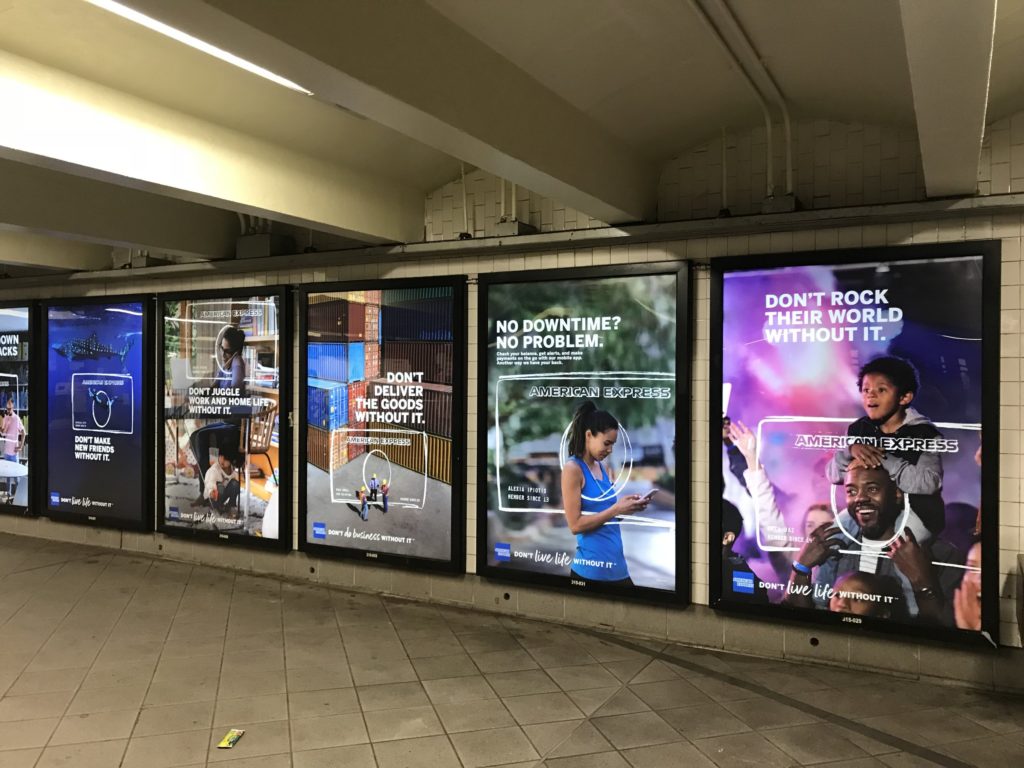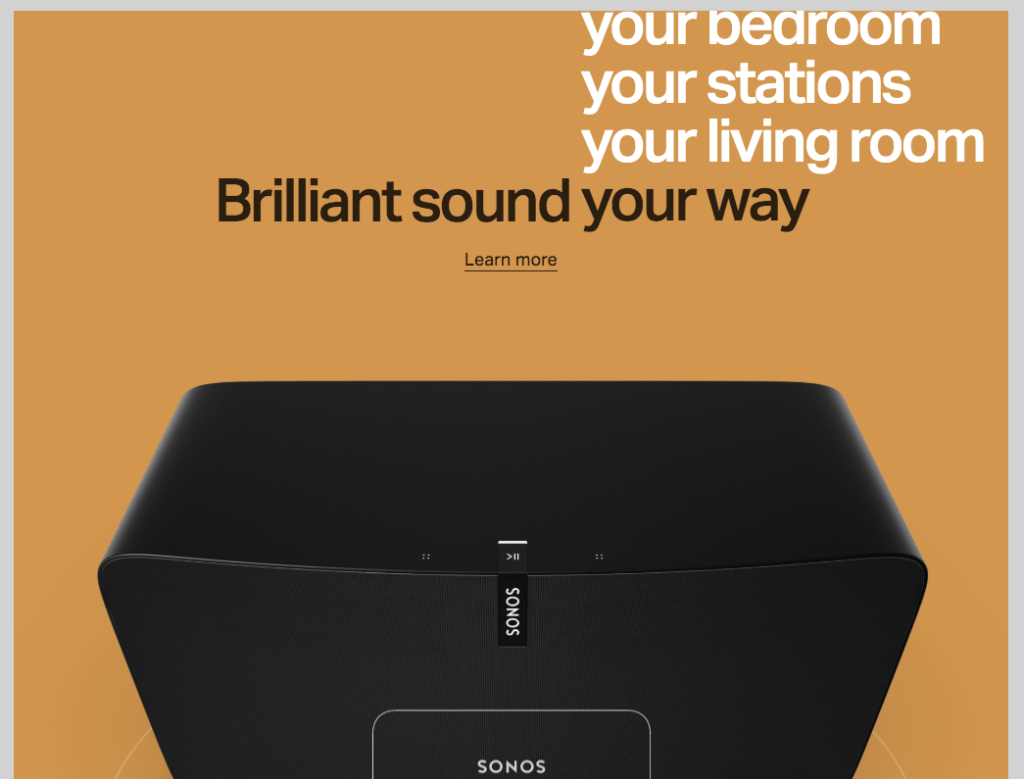Modular messaging: the tech marketer’s Swiss Army Knife
In 1975, leadership at American Express needed a new message to promote its credit cards. The tagline they had been using, “The Company For People Who Travel” wasn’t cutting it. It’s not hard to see why.
In need of some outside expertise, they enlisted the team led by famed Ad Man David Ogilvy to craft the message. What his agency came back with would, in time, become one of the world’s most recognizable slogans:
“Don’t leave home without it.”
Simple, declarative, memorable. The statement would serve as jet fuel for the brand’s next quarter-century of growth: the concept spawned countless magazine spreads and tv spots, was parodied in pop culture, and quickly found its way into our shared lexicon.
Even The Muppets joined the fun:
Fast forward a few decades to 2018 and a more diversified American Express found itself in need of a jump-start. Faced with stiffer competition than ever and flagging membership numbers, corporate leadership knew the brand was in need of a refresh.
Salvation came in returning to the brand’s roots, revisiting their most iconic messaging line with one built for the modern age.
“Don’t leave home without it” became “Don’t [live life / do business] without it.”
No longer a single tagline for a single product in the AMEX portfolio, but rather one a prime example of what we call modular messaging.
This fill-in-the-blank message structure equipped the company with what it called a “global brand platform.”
In the campaigns that followed (you may see one today, it’s still going strong), the brand leveraged the line to highlight offerings across every possible customer segment and touchpoint:
- Attending a concert? Don’t encore without it.
- Booking a trip? Don’t “Hello World” without it.
- Branching out on your own? Don’t be your own boss without it.
In building design systems we often ask ourselves, what elements need to be the same so that everything else can be different? What pieces should be intentionally fixed in placee to create the space for surprise, personality, and impact? In most cases, this looks like applying stricter rules to how a brand’s logo or typeface are used, but leaving roome within the entire system for varying expressions in illustration, patterns, tone of voice, etc.
The same approach can be applied to messaging — and can be just as effective. What messages must stay the same, anchoring your core purpose? What messages can shift, evolve, and grow as you do?
When it comes to AMEX, no matter what use case or customer story they swap in, the central message remains the same: Don’t do anything without your American Express card.
AMEX is far from alone. Brands across every industry are looking for ways to adopt more flexible messaging strategies. By distilling the brand’s marquee message to a simple, modular format, brands are better equipped to reach as many customers and highlight as many selling points as possible.
So why did this shift happen? What happened to messaging as we once knew it?
Tech happened.
Global scale happened.
Enterprise-wide strategy happened.
As long-standing business barriers came crumbling down, new opportunities called for new approaches to reach customers. No longer could companies count on the humble tagline, locked in place alongside the logo, polished and perfected to the point you could etch them in stone (something many companies did, mind you).
The world is moving toward more modular, agile approaches to messaging — in keeping with the innovative approaches used to build the tech itself.
But this extensible strategy isn’t without risk. So before you set out to develop your very own modular messaging strategy, consider the pros and cons.
3 reasons you should use modular messaging
Perfect for platforms
Today’s leading SaaS enterprises don’t just build products, they build platforms. With all the complexity that comes with uniting a range of offerings under one banner, modular messaging can help solve a lot of the headaches platform scale creates.
Too often platform-building creates confusion across the brand architecture. As one product group steps on the toes of another, messages get conflated. The right hand often doesn’t know what the left is doing.
Rather than try to navigate a small army of disparate messages across every product in your platform, a modular messaging approach helps create cohesiveness and clarity. Each product, neatly arranged and logically playing its role in the larger platform story.
Made for digital
More versatile than a standalone statement and better suited to web use cases, modular messaging is made for the digital age.
It’d be a shame to squander the possibilities the internet and tech have afforded us. Social media, digital billboards, YouTube bumpers. Marketing has become so contextual it’d be foolish to lock yourself into a single message across every touchpoint.
Going back to American Express for a moment. One of their launch campaigns as part of their new strategy involved wifi-connected taxi placements to run geo-targeted ads that would change depending on the location of the taxi. Don’t Columbus Circle without it. Don’t Chinatown without it. Don’t Dumbo without it. You get the idea.
More commonly you’ll see modular messages appear on brand websites, where clever UX design and HTML5 live text allows a homepage to say more than one thing, animating in key messages anchored around a single creative concept.
Take a page out of Sonos’ book (pictured above), which adopts a modular message to promote its wifi speakers on its website. No matter what, you know the brand stands for “brilliant sound your way.” Their modularity comes in to help double-click on what they mean by “your way.” No matter the location, no matter the media source, the sound will be brilliant every time.
Better for testing
Historically, brands would agonize ad nauseum when it came to the crucial choice of picking THE perfect message. Convening focus groups, A/B testing and retesting, endless mockups and customer surveys. It’s exhausting just thinking about it. And the fast-paced world of tech rarely leaves room for dilly-dallying.
But we all know data is essential to making smarter decisions, even when it comes to marketing messages. This is another area where modular messaging shines.
Undecided between two similar directions? Unsure of which of your messages should appear first on the homepage? The beauty of modular messaging is you don’t have to choose. Test a few different versions without abandoning the foundation of your brand’s core promise.
3 reasons you shouldn’t
You lack a clear story
Without a foundational story and clear understanding of why you exist, employing a modular messaging strategy is likely to come across as a desperate gimmick to reach customers, any customers, no matter where they come from.
Establish your brand foundation first. Make sure any strategy is rooted in your fundamental positioning, with clearly defined target audiences and differentiators. Once you have those pieces in place, you can be confident your use of modular messages won’t undermine the heart and soul of what you’re all about.
You’re new in town
Similarly, we wouldn’t recommend adopting a modular messaging strategy if this is your brand’s first foray into the world of marketing. When introducing your company, your team, and your product to the world, it’s always better to beat the same drum over and over again until customers finally start to hear you. Consistency is key. And mixing things up at this stage could be catastrophic. Startups face enough headwind already.
Focus on nailing your core story and positioning platform before dabbling in more innovative strategies. Unsure where to start? Check out our startup branding checklist for more messaging and positioning tips for early stage companies.
You won’t invest in doing it right
Given everything we’ve outlined already—the foundational brand strategy, the live text on the website, the various implementations—you’ve probably already done the math and realized a modular messaging approach isn’t likely to be the cheapest.
True, in some areas you can certainly find tech-based efficiencies that help keep costs in check better than older-school approaches might (printing costs… yeeesh). But on the whole, marketing leaders should be prepared to foot the (potentially sizeable) bill.
The AMEX example is so effective because the company and its agency thought through a rich and varied array of ways the messaging platform could come to life—and then followed through to make them a reality. Modular messages can afford you endless opportunities to reach your customers. Just make sure you can afford to do it right.
Parting thoughts
The way we see it, the name New Kind comes with a certain obligation to always keep our eyes to the horizon—anticipating new innovations in the worlds of tech branding and marketing. From what we can see, modular messaging is one such innovation.
While perhaps not well-suited for every organization, it represents a new, more dynamic, and more technologically advanced approach to reaching customers—perfect for the next generation of companies and the creative minds who lead them.

